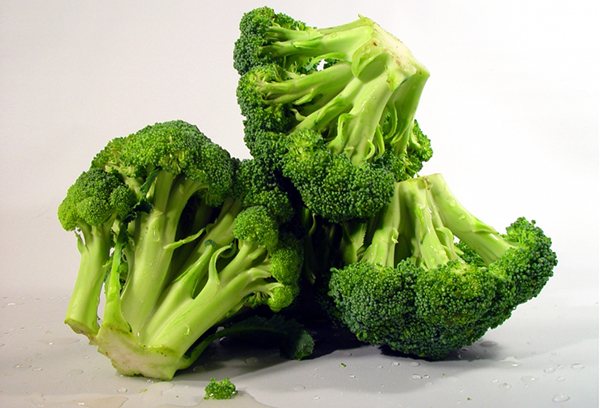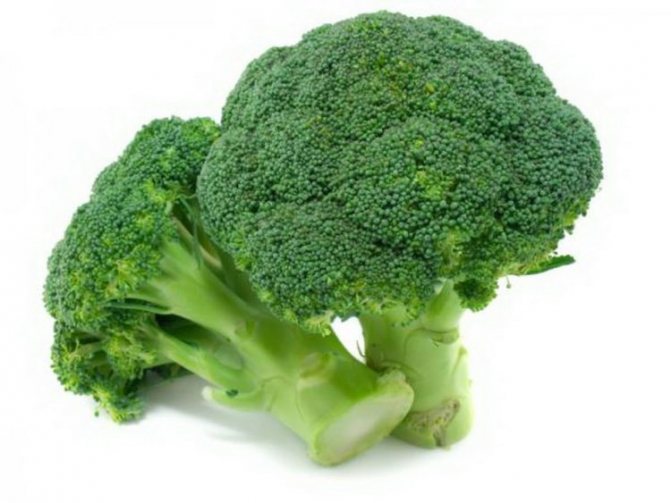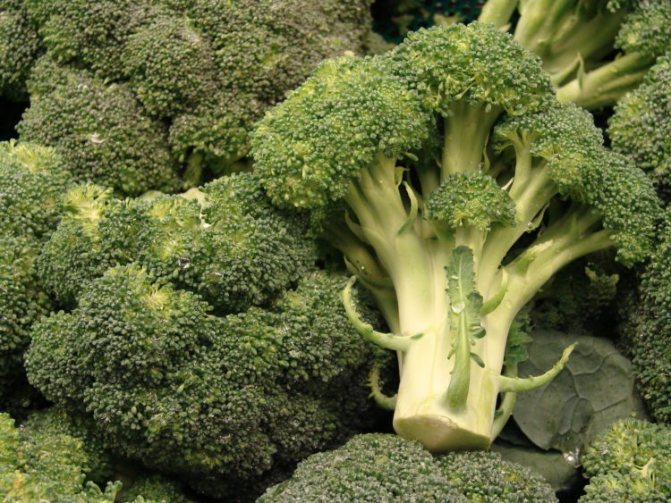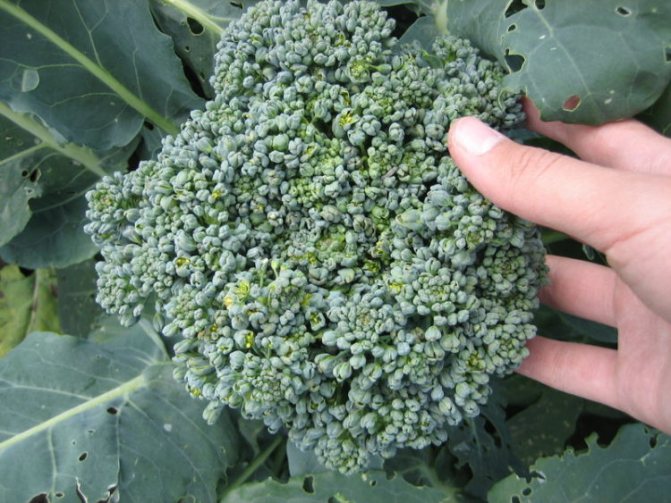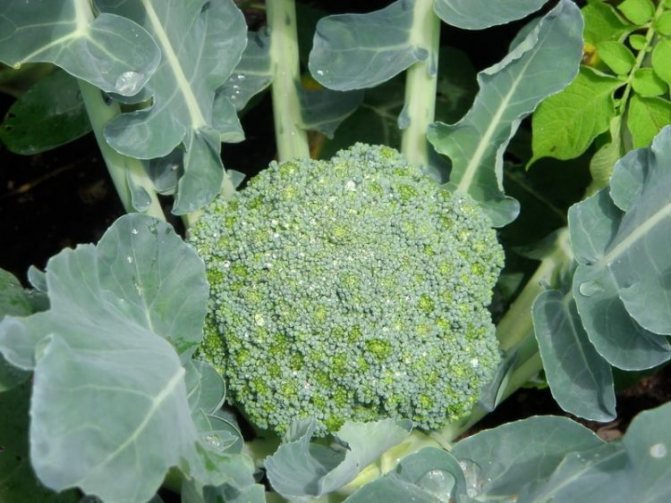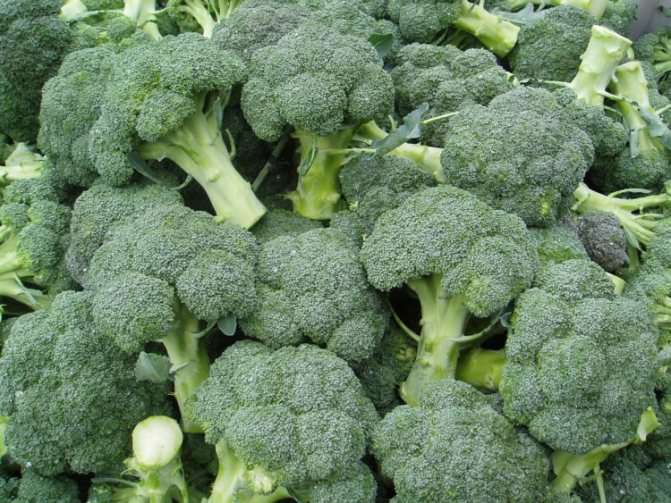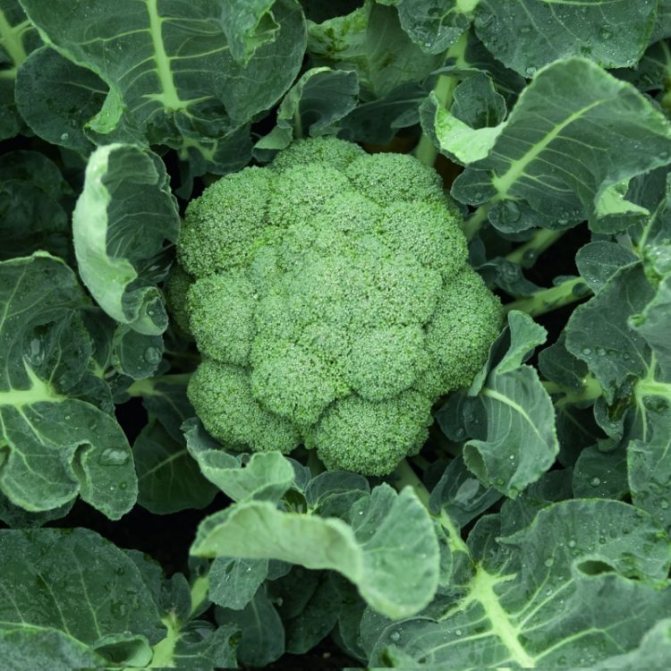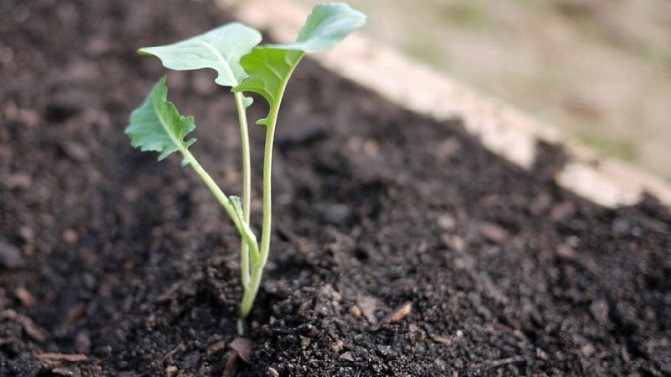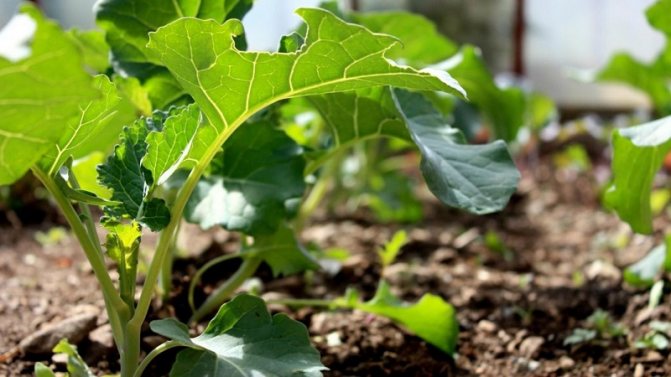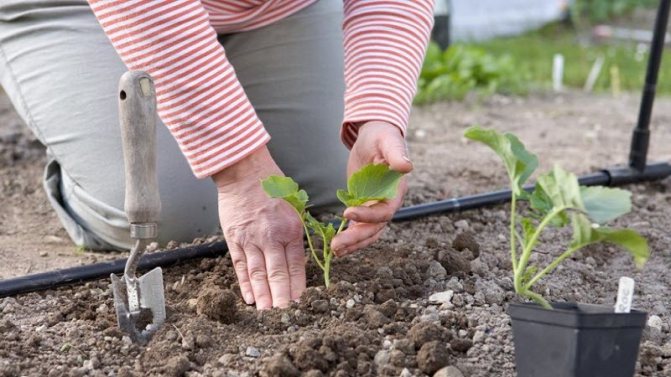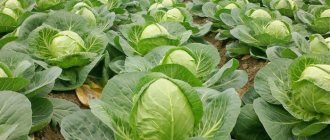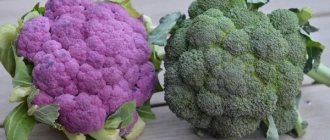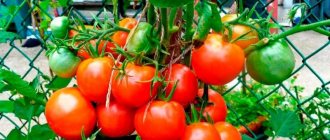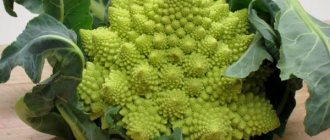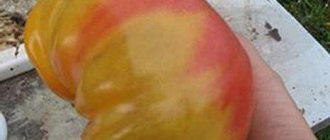Vegetable growing »Cabbage
0
992
Article rating
Broccoli is the closest genetic precursor to cauliflower. Growing broccoli in the Moscow region is not difficult, even a novice gardener can handle it. The main thing is to choose the right variety.
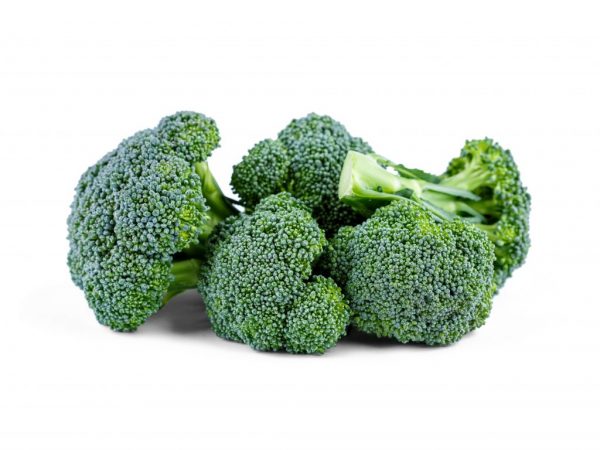
Rules for growing broccoli in the Moscow region
Description of broccoli cabbage
Broccoli cabbage leaves are green, on the central and lateral shoots, several inflorescences are formed, which do not join together in a dense head. Taste features are similar to asparagus, therefore the variety is also called asparagus cabbage. Inflorescences and shoots are usually eaten.
The plant loves moisture and warmth, does not tolerate frost very well. Its main advantage is its short ripening period. After the first harvest, secondary inflorescences are formed on the remaining lateral shoots. Depending on the timing of ripening, there are:
- early;
- mid-season;
- late varieties.
Broccoli is grown in seedlings. The picking of sprouts into open ground is carried out 35-40 days after sowing the seeds. Broccoli is often grown as a potted home plant.
Testimonials
I have been growing broccoli of the Fiesta variety on my site for five years now and I am always very pleased with it. It is not demanding for growing conditions. Of course, you need to water and feed it, otherwise the heads will be small. But she has no special secrets.
Veremeya
Message from Mismusaeva Please tell me the broccoli hybrids that are all-season. Broccoli Reggae F1 Belstar F1 Ironman F1
Oldgrey
My broccoli hybrid Monaco F1 works well. Blanched and fried in breadcrumbs tastes better than colored. Now I can't imagine a cabbage row without broccoli.
Grant
You can grow this healthy and tasty vegetable in any climatic zone suitable for gardening. If you choose the right variety and follow the techniques of its agricultural technology, then the harvest is guaranteed. You should focus on the climate of the region: the earlier the warmth comes, the later ripening varieties can be used.
Early maturing varieties
The best cabbage varieties for the Moscow region with an early ripening period are represented by the following varieties: Batavia F1, Linda, Lord F1, Tonus.
Early broccoli seeds are recommended to be sown in April. Caring for varieties of Peking cabbage for the Moscow region is no different from growing in other regions. The main thing is to constantly maintain soil moisture, otherwise the taste of vegetables will suffer.
The soil on the site begins to be prepared in autumn. Broccoli will yield a good harvest if grown in an area where legumes used to grow. These plants enrich the soil with oxygen, which is good for the development of asparagus heads.
Batavia F1
Medium early hybrid obtained by Dutch breeders. The ripening period is 8-90 days. Mature inflorescences are large. Their average weight is 800 g. Vegetable culture perfectly tolerates transportation and is stored for a long time.
The plant feels great outdoors. To maintain optimal moisture levels, the beds are mulched after each rain and watering.Top dressing is carried out 2 times per season. The first one - 20 days after sowing the seeds, the second - after another 2 weeks. Wood ash and organic matter are used as fertilizer.
The main thing is to harvest Batavia on time. During the period of technical maturity, the heads acquire a dark green color. If you miss the right moment, some of the nutrients will begin to disintegrate, and the taste of the vegetable will suffer.
Linda
Linda cauliflower is a first generation hybrid. Its ripening period is 75 days. The heads are dark green, their average weight is 400 g. After the first harvest, the second-order inflorescences are formed on the remaining shoots. Sowing seeds is carried out from April 15 to May 1.
The plant feels great both in greenhouse conditions and in the open field. The variety is not susceptible to fungal diseases. Of the early ripe varieties of cabbage for the Moscow region, Linda is one of the most productive. This type of broccoli ranks first among its relatives in terms of iodine content.
Lord F1


Variety Lord is not afraid of temperature changes
It is a high-yielding variety. Its ripening period is 2 months. Sowing is carried out in mid-March-April. In open ground, seedlings dive at the end of April.
The stem of the plant has a dense structure, the heads are large, weighing up to 1.5 kg. Inflorescences of the second order continue to form until late autumn. Unlike other varieties, this one reacts normally to temperature changes.
Tone
This variety belongs to the most ancient. The heads of the inflorescences are not too large, only 200 g each. Cauliflower has a brownish tint. Seeds begin to sow in March, so that the plant has time to get stronger before diving into the open ground.
A transplant to the site is carried out in May. Immediately after the pick, the sprouts should be covered. The ripening period after picking seedlings is 30 days. Harvesting is carried out at the end of June. Fruiting with proper care lasts until early September.
Harvesting and storage
The first Green Magic crop is ready for harvest in late June or early July. It is important to harvest before the cabbage blooms.
The following signs indicate the readiness of the heads for cutting.:
- the heads are dark green;
- the diameter of the head is at least 10-14 cm;
- the buds of the inflorescences are closed.
If the buds begin to turn yellow, the cabbage is urgently cut... Otherwise, it will bloom, become tasteless and less nutritious.
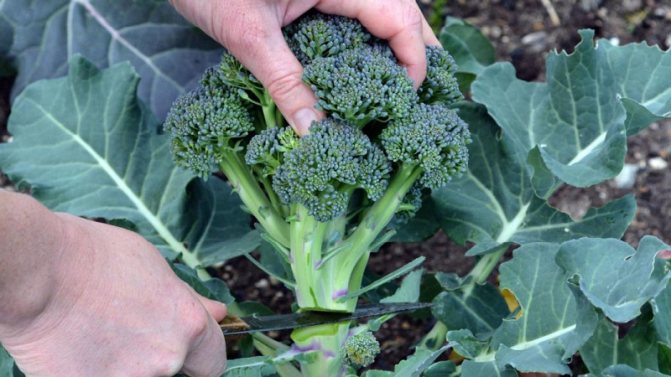

Heads ready for collection are cut with a clean, sharp knife... They do it early in the morning.
Reference. Plants are not dug up. They will give lateral shoots until mid-September. They are also cut to yellow.
Mid-season varieties
The best mid-season broccoli varieties for the Moscow region are presented in two varieties:
- Ironman F1.
- Dwarf.
It is recommended to plant varieties of medium ripening in a well-lit place. Watering is carried out every other day. The advantage is the ability to grow fruits at home.
These varieties take root well in cool climates, the optimum growing temperature is 16-18 ° C.
Ironman F1
High-yielding hybrid of the first generation. Its castings are blue-green in color. The central inflorescence is dense, weight is about 600 g. The bush ripens in 90 days. It is recommended to plant it with a seedless method in March. It feels great outdoors without additional cover.
In the hot season, the soil must be mulched after moistening, loosened in time. To avoid the spread of fungal diseases, a too tight fit is not recommended. The optimum distance between plants is 30 cm.
From 1 sq. m collect up to 3 kg of broccoli. The vegetable is distinguished by its high taste, it is perfectly stored. It can be used for freezing, fresh, for preparing various culinary delights.
Gnome
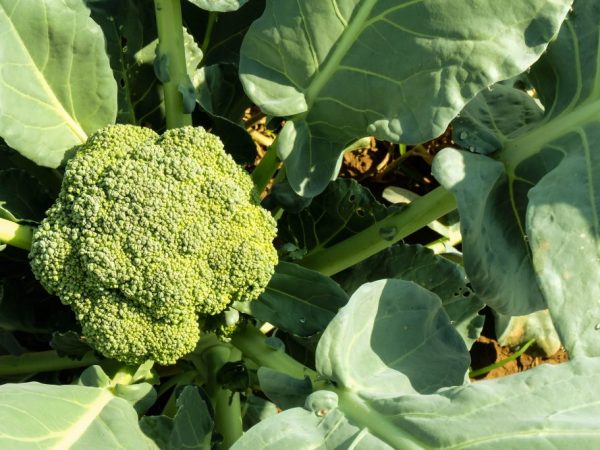

The variety has a compact inflorescence
The variety is distinguished by compact inflorescences. The weight of the central part is 300 g, with good care - 600 g. The shape of the head is elliptical. The plant has a powerful root, is not afraid of drafts.
Vegetable crops love open, well-lit areas. Does not tolerate shading. It is better to take the soil for planting seeds in the store.
Sowing is carried out in March. After 40 days, the seedlings dive into the area. Harvesting vegetables begins in the fall. Average yield indicators - 2.4 kg per 1 sq. m. The variety is excellent for fermentation, it is well kept fresh.
Growing features
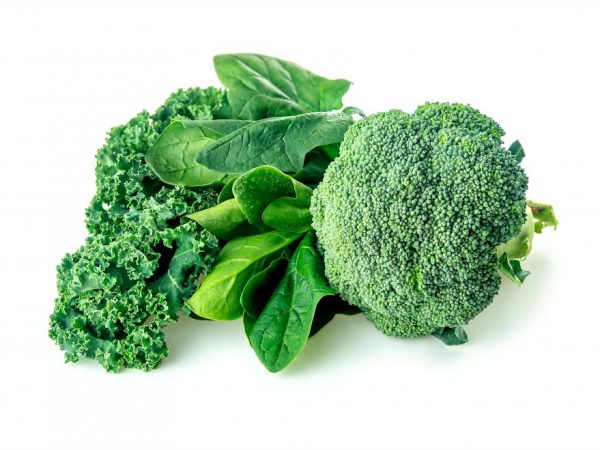

Cabbage is planted with seedlings
According to the description, growing broccoli Fiesta category f1 is produced by the seedling method. To do this, seeds are planted in a greenhouse or container in early April. They must go through the process of disinfection in a manganese solution (3 g per 5 l of water). After 40 minutes. they are placed in a freezer for hardening.
The seeds are planted in containers or a greenhouse according to the 7 x 10 cm scheme. The temperature of 20 ° C-26 ° C allows the process of emergence of the first shoots to be accelerated. At night, it is reduced to 15 ° C-17 ° C. When 2-3 pairs of leaves hatch on the plant, they start planting in a permanent place.
The landing is carried out in early May, when the ground warmed up after winter. The optimum soil temperature is 10 ° C-12 ° C, it is better to choose fertile ones. Chernozems, sandstones or loamy soils are well suited. Their acid level should not exceed 4%.
They choose unshaded areas, since the plant needs sunlight. The planting depth should be 1-1.5 cm. A distance of 50 cm is kept between the bushes, and 70 cm between the rows. This allows the plants not to shade each other and fully form the root system.
Late varieties
List of late varieties of cauliflower for the Moscow region: Agassi F1. Marathon F1.
Their ripening period is 130-150 days. Seeds begin to be sown in early March. It is better to plant seedlings from 15.04 to 15.05. Initially, crops need to be covered. In hot summers, the soil is mulched after each watering. To get a good harvest, fertilize in the form of organic matter 3 times per season.
Agassi F1
Heat-loving hybrid. The shape of the head is flat-rounded. The weight of the central inflorescence is 700 g. Productivity - 4 kg / sq. m.
The variety can grow in open ground and greenhouse conditions, responds well to loosening the soil and abundant watering. This variety can be grown at home on a windowsill and enjoyed fresh throughout the winter.
The crop is stored for up to 5 months, has a pleasant taste, and tolerates transportation well. Due to its high yield and quality characteristics, it is suitable for growing on an industrial scale.
Marathon F1
The hybrid is cold-resistant. The color of the head is blue-green, weight is about 800 g. The inflorescences have a soft texture, have a delicate taste. Productivity from 1 sq. m - 3 kg.
High quality lateral inflorescences. The hybrid grows well on slightly acidic soils with a pH level not higher than 6. If the indicator is too high, liming is carried out. The plant responds well to organic fertilizers.
Harvesting is carried out in September. This variety is very popular with gourmets, it is used in the preparation of various dishes and fresh, it is not suitable for conservation. It retains valuable minerals for 3-4 months.
After landing
So that the planting of broccoli does not end with the death of young plants, they must be protected from the scorching sunlight. Shelter can be made from old buckets or spruce branches. Artificial shading is left for 7-10 days until the seedlings take root. Caring for asparagus cabbage is simple. Her agricultural technology consists in procedures familiar to all summer residents. The plantings are regularly looked after:
- watered;
- feed;
- weed;
- huddle;
- loosen.
The secrets of the high yield of broccoli have been revealed for a long time.Frequent watering and fertilization guarantee success in growing crops. It is better to moisturize the planting in the evening hours. At the stage of formation and development of inflorescences, the procedure is carried out every other day. If the summer is hot and dry, water the broccoli bushes daily - early morning and evening, when the heat subsides. The rest of the time, one hydration per week is sufficient. Watering the asparagus cabbage needs abundant watering, the soil should be at least 15 cm wet.
Broccoli will need a lot of nutrients for vigorous growth and abundant fruiting. It is advisable to use organic compounds for feeding: infused mullein, chicken droppings. Additional nutrition is provided for asparagus every 14 days. Such care begins from the moment her bushes take root in a new place and take on growth. When inflorescences begin to form, they switch to mineral fertilizers. Three components are stirred in 10 liters of water:
- superphosphate (40 g);
- ammonium nitrate (20 g);
- potassium sulfate (10 g).
The resulting composition is watered plantings under the root. Then the care in the form of dressings is suspended. It is renewed after the main inflorescence is cut from the cabbage. The same mineral preparations are used for fertilization, but in a different proportion. During this period, plants need 3 times more potassium and 2 times less phosphorus and nitrogen. If you continue feeding, the side shoots of the asparagus cabbage will begin to grow actively and it will be possible to harvest an additional crop from it.
Advice
After each watering and fertilization, the soil under the broccoli bushes must be thoroughly loosened.
